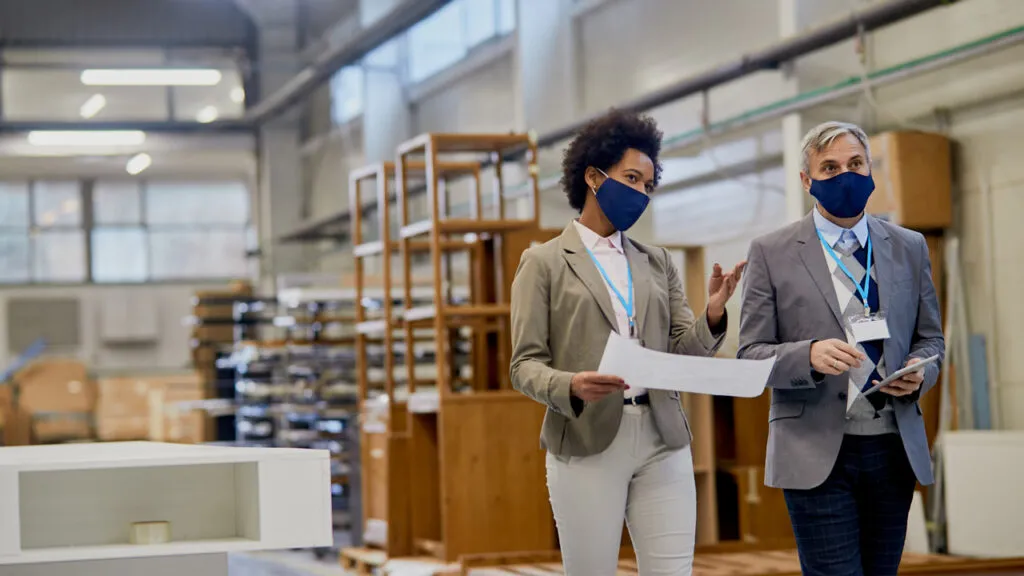According to the experts over at All Pro Cleaning Systems, safety and security are extremely important concerns for those facility management companies that have been tasked with overseeing buildings, infrastructure, property, and human occupants. With rising threats from crime, terrorism, severe weather, accidents, and more, it is vital that facility managers implement both multilayered physical and digital measures to help protect people, assets, systems, and data.
Physical Access Controls and Surveillance
Controlling and monitoring physical access to a facility is the foundation of security. To that end, facility managers need to install integrated access control systems that include smart locks, biometrics, pin codes, and badge readers at all entry points. Critical areas, like server rooms, need additional access restrictions as well as activity logging. Surveillance camera systems, both indoors and outdoors, offer 24/7 visibility and proactive threat alert capabilities. Advanced video analytics like license plate recognition, object and texture detection, and anomalous behavior monitoring all further strengthen alerts.
Facility teams need to establish and regularly audit strict protocols governing access privileges, key management, visitor management, access schedules and activity logs. Real-time tracking of who enters secured areas and when they do helps in quickly identifying unauthorized access. Integrating all of this with mass notification systems allows instant communication and coordination during emergencies. Having mandatory third-party audits at least once a year helps identify any control gaps or needed enhancements.
Training and Emergency Planning
Offering regular training to facility staff, tenants, contractors and visitors on both security protocols and emergency response helps to promote readiness. Coordinate these annual drills for events like active shooter, fire, earthquake, flood, power outages or chemical leaks. Post clear evacuation maps and procedures in visible areas and maintain updated emergency action plans detailing response roles and detailed procedures for different scenarios. Share emergency contacts lists and incident reporting steps. At the end of the day, proper training and planning prepares everyone to react quickly and appropriately in crisis situations.
Cybersecurity Measures
With networked building systems and increased reliance on data, facilities face expanded risks which can endanger physical safety if digital assets are compromised. Facility managers must implement robust cyber protections to safeguard building controls, surveillance systems, and data from hacking attempts or malware. Measures like multi-factor authentication, advanced firewalls, encryption, endpoint monitoring, and frequent backups defend against intrusions. Promptly install software patches and security updates. Disable remote access to sensitive building controls outside secured networks. Conduct phishing simulations and cybersecurity training to keep employees alert. Robust cybersecurity defenses prevent compromise of critical systems.
Ongoing Assessments and Upgrades
Regular comprehensive assessments of safety and security enable identification of gaps and needed upgrades before incidents occur. Conduct penetration testing to find physical or digital weak points. Evaluate evacuation routes, emergency signage and equipment. Assess lighting adequacy. Inspect for any surveillance blind spots. Consider new needs like metal detectors, bollards, window film, alarm systems or other upgrades. Maintain a multi-year budget for continuous safety and security enhancements to maintain a state-of-the-art protection program.
An interdisciplinary team including security leaders, facility managers and executives should convene regularly to align on priorities and initiatives. Seeking regular input from law enforcement contacts further strengthens programs. Keen understanding of regulations, insurance requirements, and liability issues helps drive appropriate resourcing and compliance. Proactive, ongoing assessments and upgrades are key for robust facility defense.
Conclusion
Providing measurably safe and secure facilities is an immense responsibility for facility managers. Rigorous implementation of modern physical and digital access controls, training, cybersecurity protections, and regular audits enables robust defense-in-depth. When facility teams make physical and digital safety a strategic priority backed by proactively funded security programs, they foster demonstrably resilient environments able to prevent, detect, and withstand threats and emergencies. Facility management leaders must champion comprehensive safety and security governance to protect their most vital assets – human lives.









